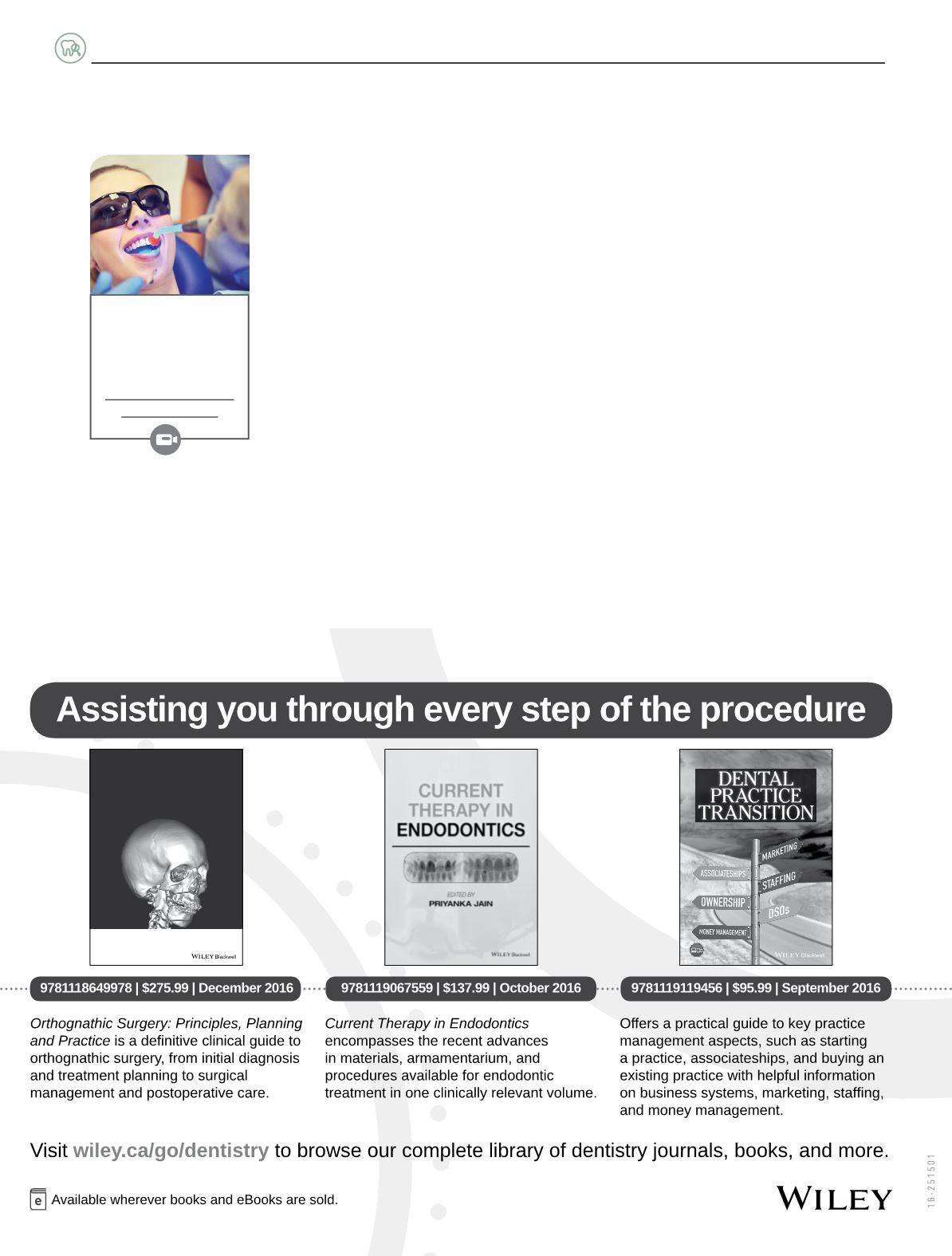
 32
|
Volume 3 Issue 6
32
|
Volume 3 Issue 6
S
upporting
Y
our
P
ractice
3What difference does it make? Materials
with both an alternate initator and
camphorquinone—the ones you expose
to a multiwave light—will cure better at the
top surface than if you use a blue-only LED
light. However, the blue light penetrates very
deeply into the composite and that’s where
the bulk strength of the material comes from.
With a blue-only light, the blue output is
much more intense compared to the blue
output of a multiwave light, so it’s a trade-
off. You’re likely going to optimize curing
performance if you select a light and a specific
composite from the same manufacturer—but
you often don’t have that luxury.
JO:
I would argue that, based on today’s
light curing chemistries and much of the
supporting literature and data, those curing
lights with 2 distinct LED wavelengths may or
may not provide any additional benefit to the
curing chemistry itself. The bottom line is, I
think we need to keep things simple.
HS:
In general, a buyer of a multiwave light
also needs to be aware that the blue and
violet light-emitting diodes are placed in
distinct locations in the curing light head. The
section of the light head that has the violet
LED will not effectively cure the surface of a
composite that is only blue light sensitive. This
means when the light illuminates the surface
of a restoration, one area is exposed to violet
light and another area is exposed to blue
light. The locations of where the violet and
blue lights fall within the cavity preparation
become of clinical relevance.
On the importance of a
uniform light beam
JO:
I believe it’s important to select a
curing light that provides a light beam that
is relatively homogenous or uniform over
the entire tip at clinically relevant distances,
somewhere between 3–10 mm. Preferably,
the light should not have a distribution of
what I call cold or hot spots; the goal is to
ensure an even curing across the entire
restoration.
a
To watch the full panel
discussion with Drs.
Strassler, Oxman and
Rueggeberg, visit:
oasisdiscussions.ca/ 2015/09/21/lcc/ ORTHOGNATHIC SURGERY PRINCIPLES, PLANNING AND PRACTICE Editedby Farhad B. Naini and Daljit S. Gill A PRACTICAL GUIDE TO MANAGEMENT S E C O N D E D I T I O N Edited by David G. Dunning and Brian M. Lange















